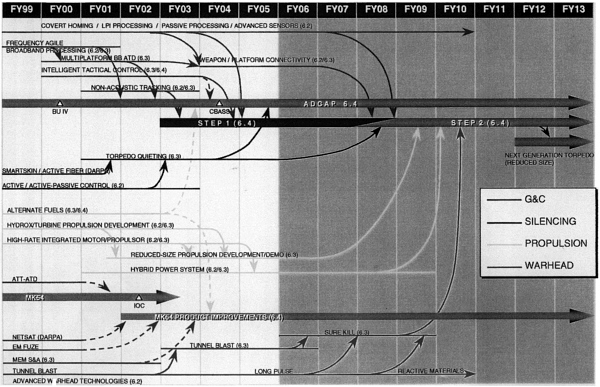
FIGURE A.1 Technology insertion road map showing the expected schedule, according to the Undersea Weapons, Vehicles, and Countermeasures Master Plan, for technology improvements coming from the four R& D programs (guidance and control, silencing, propulsion, and warhead) and also from DARPA, to be inserted in the planned evolution of the U.S. Navy's heavyweight torpedoes (MK 48, top section of the road map) and lightweight hybrid torpedoes (MK 54, lower section). The map also indicates the schedule and type of funding for the R&D programs (6.2 and 6.3)and engineering development (6.4), as well as the schedule for the advanced technology demonstration (ATD) of the MK 54 as an antitorpedo torpedo (ATT) countermeasure for surface ships. Acronyms are defined in Appendix D.
SOURCE: Timothy Douglass, Program Executive Officer for UnderseaWarfare, “Torpedo S&T: An Emerging Crisis,” briefing to the committee, August 31, 1999.




